-

Erin Donahue -

Christina Barkanic -

Brittany Trott -

Emily Wiley -

Jessica Reilley -

Chris Raines -

Will Nichols -

Emily Reddy -

Michele Marchetti -

Michele Frank -

James Gherardi -

Kit Henshaw -

Christina and Erin -

Kim Tait -

Erin McKinney -

Steve Spanelli -

Sam Komlenic -

Katherine Taylor Grofic -

James Eisenstein -

Jamie Oberdick -

Anna Lombardo -

LacCreta Holland -

Tony Ricci -

Local Food Journey -

Laura Young -

Kristin Camplese -

Harrison's Fresh + Local -

Danielle Matalonis -

Kristine A. -

Linda Weaver -

Naomi Elle Schwartz -

Dana Stuchul -

Cara McShane -

Brittany Smith -

Jessica Illuzzi - Frosty
-

Jessica Paholsky -

James Sechrengost -

Brad Yeckley -

Maya Althouse -

Jordan Reabold -

Kim Chase -

Maria Bryant - Alexandrea Scott
End of summer reflections…
Posted by James Eisenstein on 09/16, 2013 at 08:31 AM
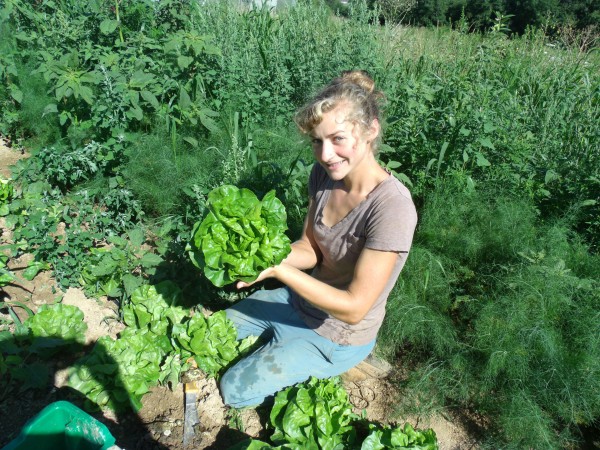
Working on a farm ties you intimately to the earth’s rhythms like nothing else. Professors begin the new academic year in the fall, then start all over again in January. But what organic vegetable growers do changes dramatically with the seasons.
Usually, farmers are too busy to reflect on much beyond which 20 of the 30 essential tasks that need to be done right away they can do. But I have the luxury of being (supposedly) retired, working only half time, and this allows me to contemplate the passing of the seasons. So as we enter the fall, this is an appropriate time to review this summer, mostly in pictures.
Every year, if you are lucky, some crops will do well and others not so well, just as a function of the weather. If you are unlucky, you get practically nothing.
This year, the list of “didn’t do so well†is surprisingly long. Only the first planting of carrots survived the onslaught of weeds. The cool weather stunted the okra, and we had a decent supply only because we planted lots of it. The same is true of peppers and eggplants—enough to feed our CSA harvest share customers and sell at market, but production that fell short of many previous years.
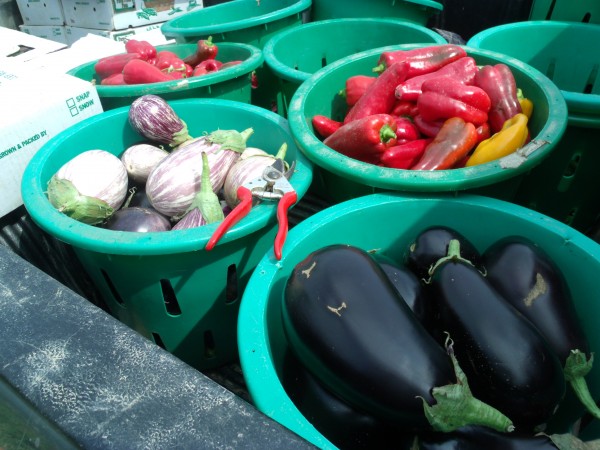
These peppers and eggplants were just harvested and are on the loading dock ready to be put into the cooler.
We had a good supply of tomatoes for two reasons. Our planting in the high tunnel produced a good crop early that lasted a long time. Our field tomatoes produced less than we would have wished, in part because we were not able to tie them to stakes soon enough or well enough. But we had some nice cherry tomatoes, a few heirlooms, and (thanks to large plantings) an ample supply of regular tomatoes.
We planted a lot of tomatoes, so we were able to take a good supply of them to market even though per/plant production was not great this year.
As usual, our lettuce did very well. John knows how to grow lettuce. We also enjoyed a nice harvest of green beans. And unlike past years, our melons and squash (including acorn and butternut) did well. Potatoes also came through, as did cucumbers.
We seem to have wonderful lettuce from early spring through fall. Our super-employee Hanna is displaying a Boston Bibb picked on Aug. 26.
We planted green beans late to fool the bean beetles. It worked. These French Fillets produce beans over several weeks, so they can’t be harvested mechanically. Therefore, they aren’t usually available in stores. Our customers raved about them (and we are still harvesting them in September).
We’ve never had a better year for watermelons. This is a yellow variety, beautiful and sweet.
After starting an orchard seven years ago, we finally survived spring frosts and were able to harvest Seckel and Asian pears. The harvest was small, but the fruit was wonderful and gave us hope for bigger crops in the future.
The first Asian Pears we harvested are called “20th Century,†one of the most widely grown. We sold all we harvested in one day at the North Atherton Farmers Market. We have several other varieties that will we sell later in September and October still ripening.
It is too early to tell what fall will look like, but our sweet potato vines look good. We’ll have a parsnip crop (see “Why Grow Parsnipsâ€), and we usually do well with fall greens–kale, bok choi, spinach, arugula, and fall lettuce.
Farmers are not known as the world’s greatest optimists. Stubborn yes, and hopeful, but with a honed ability to look at what could and should have been. But looking back on the spring and summer, we were able to provide our CSA customers with full boxes, and offer our farmers market customers a wide variety of fresh, organic vegetables.
![]() Author: James Eisenstein
Author: James Eisenstein
Bio: Unpaid Field Hand at Jade Family Farm | Former Penn State Professor
- Our Local Food Journey comes to an end
- Winter isn’t a quiet time at the farm
- Get the taste of garden season right now by growing herbs indoors
- All you need to know about PASA’s Farming for the Future conference


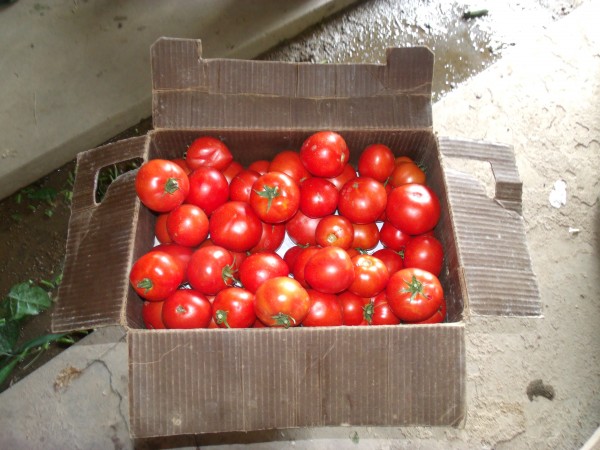

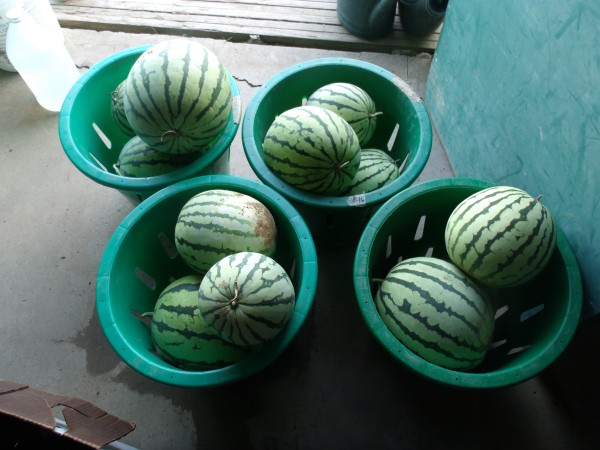
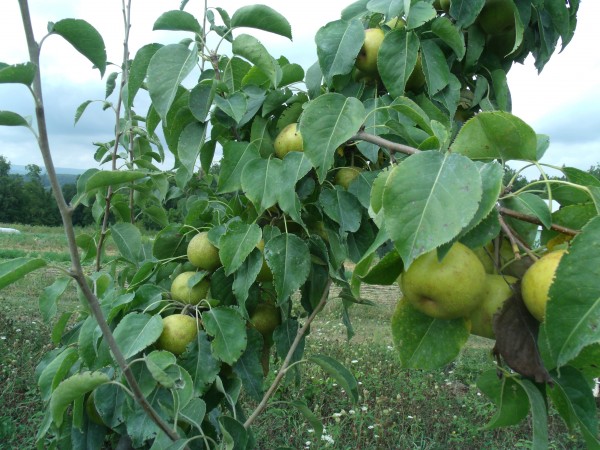







NO COMMENTS